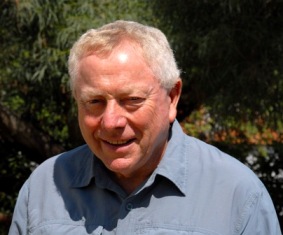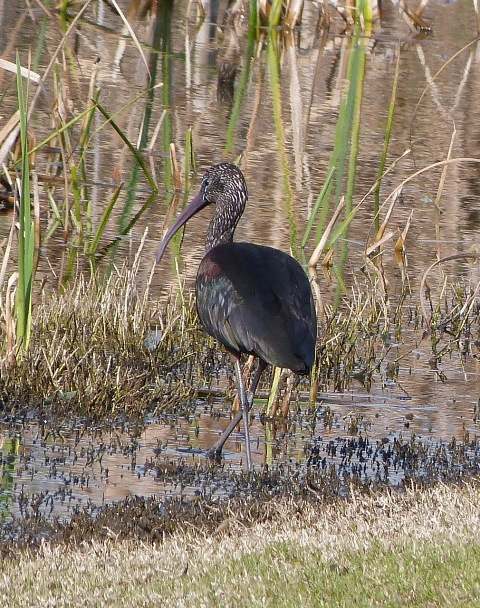Out with Papa-figos

Clive Viney - co-author of Algarve Wildlife - the natural year
Papa-figos (which literally translates as fig eater) is the Portuguese name for the Golden Oriole, one of the iconic visiting birds of the Algarve. Clive Viney is the co-author of Algarve Wildlife - the natural year, and now, under the guise of Papa-Figos, chronicles his finds, thoughts and feelings while walking in the Algarve countryside throughout the natural year. Look out for his regular updates, illustrated by his fellow co-author and photographer, Ray Tipper, who has kindly provided some of the photographs that illustrate these articles by clicking through from the links below.
Green Heron – A First for Continental Portugal
The Green Heron Butorides virescens is a small, solitary heron found in low-lying wetlands in North and Central America. It is an extremely rare vagrant to Western Europe. It is one of very few tool-using birds, inasmuch as it will drop bait onto the surface of water to attract fish.
On 18th October 2018 birdwatchers photographed what they thought was a Little Bittern at Lagoa de São Lourenço on the Quinta do Lago estate. The photographs were circulated on the Portuguese birding grapevine and it was soon concluded that the bird was in fact a Green Heron and a first record for Continental Portugal. Compared to the United Kingdom, Portugal has a tiny twitching community but nevertheless fifty birders were at the lakeside on the morning of Sunday 21st October. My co-author, Ray Tipper, never misses a chance to catch a rarity and he managed to photograph the bird but unfortunately it was well away from the public viewing area. The next afternoon, Ray received news that the heron had moved to the much more accessible south-western corner of the lake and took a series of stunning photos. The bird’s arrival was even covered by algavedailynews.com, which provided information on where and how to see the bird. A second first winter Green Heron was discovered in the Lisboa area the following week and had clearly also arrived on the same weather system. I much admired Ray’s photos and found the news remarkable but was not one to chase misplaced birds.
.jpg)
Green Heron at Lagoa de São Lourenço, Quinta do Lago. Picture Ray Tipper. Licence enquiry...
A month later I walked through to Lagoa de São Lourenço from Quinta do Ludo and enjoyed sorting out the numerous wintering duck but saw no sign of the Green Heron, so presumed that it had moved on or had not survived long after its stormy Atlantic crossing. The large area of Quinta do Ludo and the eastern end of Quinta do Lago is a favoured place for seeing a wide range of Algarve birdlife and twice in December I visited the area. To my surprise, on 20th December, a friendly Dutch lady told me that only a week previously she had photographed the Green Heron.
The New Year was welcomed with a continuation of wonderful crystal clear weather; frosty at dawn but warming to a heady 20° in the midday sunshine. Perfect for getting out and exploring the countryside. On 2nd January, after dropping off at Faro Airport the last of my visiting family, I headed to the nearby Pontal pinewoods to catch the sunrise.
I wandered due west through the pines to a huge, patchily grassed open area. Apart from a small flock of Meadow Pipits, a few Wood Pigeons and an obliging Mistle Thrush there were not many birds. I headed for a line of tall reeds and the surprise here was a tiny Penduline Tit – a scarce and very local winter visitor. As the rising sun caught the trees, a good range of birds was easily spotted.
.jpg)
Penduline Tit. Picture Ray Tipper. Licence enquiry...
My wandering took me through to Quinta do Ludo. A drained impoundment contained a huge mixed flock of Dunlin and Sanderling but disappointingly the nearby lake was devoid of waterfowl. Nevertheless, I counted seven roosting Booted Eagles and two Marsh Harriers quartered the dried out reedbed. As ever, in winter, the Esteiro da Maria Nova attracted a huge number of Wigeon and an uncommon Great Egret showed well. Perhaps the Algarve’s earliest breeding butterfly, Green-striped White, was on the wing.
.jpg)
Green-striped White butterflies. Picture Clive Viney.
As always, I walked through to Quinta do Ludo along the edge of the golf course. Among the usual White Wagtails feeding on the fairway, I picked out one of the distinctive British race, a Pied Wagtail – an uncommon cousin from the cold north. I was surprised to see and meet so many birdwatching visitors and most were carrying telescopes and tripods. At Lago de São Lourenço Lake I easily ticked off a wide range of expected species, including a now regular Glossy Ibis.

Glossy Ibis. Picture Clive Viney.
To my surprise at the narrow end of the lake, the famous Green Heron literally flushed from the reeds at my feet and settled in front of me on a tiny island of matted vegetation. It looked in tiptop condition. An attractive lady birdwatcher was quite close by, so I briefly whistled and pointed to the heron. She looked delighted and clicked away. I only wished that I had my camera to hand, as the heron totally ignored me (now used to its star status). I continued to the wide channel, where the tide was up and noted a selection of roosting waders.
.jpg)
Green Heron. Picture Ray Tipper. Licence enquiry...
On my way back past the lake, a visiting birder asked me in broken English where the blue heron was. I corrected the identification and pointed to where it had been and hoped that the Green Heron would show and make his day.

